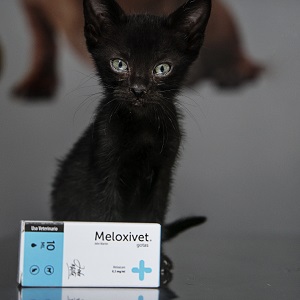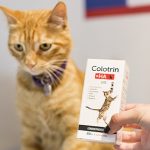
Non-steroidal anti-inflammatory drugs (NSAIDs) are an important type of drug in cat medicine, having analgesic, anti-inflammatory and antipyretic activity. While most published data on their use in this species is related to short-term treatment, there is increasing evidence of the value of these drugs in the treatment of chronic pain in cats (for instance, the one associated with DJD), and some NSAIDs have now been authorized to be used in long-term treatments in cats in some geographic areas.
The aim of this technical article is to provide practical information for veterinarians in order to encourage an adequate treatment with NSAIDs whenever cats may benefit from the use of these drugs.
NSAIDs and cyclooxygenase/lipoxygenase inhibition.
As previously stated, the therapeutic benefits of the NSAIDs include their antipyretic, analgesic and anti-inflammatory actions. They exert these effects mostly through inhibiting the production of prostaglandins (PGs) and leukotrienes (LTs) by cyclo-oxygenase (COX) and 5-lipoxygenase (5-LOX) enzyme, respectively. Most NSAIDs primarily inhibit the activity of COX enzymes.
Two different COX isoforms have been identified (COX-1 y COX-2) as being responsible for the production of prostaglandins. A third isoform has also been identified, initially known as COX-3, now described as a splice-variant of COX-1, which seems to have a role in the central control of pain. Phospholipase A2 is the rate-limiting enzyme that initiates the COX pathway by liberating arachidonic acid (AA) from membrane-bound phospholipids. Then, both COX isoforms are responsible for converting AA to PGG2 and PGH2 via identical enzymatic reactions. Following these initial steps, PGH2 functions as an intermediate substrate for the biosynthesis, by specific synthases and isomerases, of prostaglandins, prostacyclin and thromboxanes. COX-1 turns AA into a range of molecules, including thromboxanes (TX), such as thromboxane A2 (TXA2), and prostaglandins, such as PGD2, PGE2 and PGF2, and prostacyclin (PGI2). COX-2 activity produces a narrower spectrum of prostaglandins, in particular PGE2 and prostacyclin.
The prostaglandins play a major role in many aspects of normal physiology, which includes vascular homeostasis, gastroprotection, renal development and blood flow, blood clotting, bone metabolism, wound healing, nerve development and growth, and immune responses. They are also involved in pathophysiological processes, including pain and inflammation, and cancer progression. Much of the information we have nowadays is not specifically about cats since there are not enough statistics.
COX-2 selectivity
✜ Just as it happens with other species, studies of NSAIDs in cats suggest there is no difference in anti-inflammatory or analgesic effectiveness between COX non-selective drugs and COX selective inhibitors.
✜ It is supposed, as it happens with other species, that using drugs with a greater COX-2 selectivity in cats will help avoid some of the potential adverse effects associated with COX-1 suppression, such as irritation/ulceration and platelet inhibition. Nevertheless, selective COX-2 inhibition will not completely negate the possibility of appearance of adverse effects and will not confer any protective effect at the renal level in comparison with a non-selective inhibitor.
Dosing frequency
✜ In order to avoid potential side effects, owners should be encouraged to work on titrating to the ‘lowest effective dose’ that is effective for their cat, knowing that this may change over time. Frequently, this dose may be lower than the registered dose.
✜ In overweight or obese cats, it is wise to calculate initial doses for NSAIDs according to their ideal or lean body weight.
✜ When trying to reduce the overall dose of an NSAID, it would be wise to reduce the registered dose but to maintain the frequency recommended by the manufacturer, whenever possible.
✜ Experts recognize that intermittent/pulsating treatment, for example 2–3 times a week rather than daily, is better than no treatment at all, and, anecdotally, it appears to be effective in some cats. However, there may be a risk of significant periods of time when no effective treatment, or optimal treatment, is being achieved.
✜ Intermittent drug withdrawal, a reduced frequency of dosing, or a reduction of the dose may help owners to assess the effectiveness of the drug.
✜ Experts consider there are few reasons for pulse therapy with NSAIDs unless the underlying disease process varies sufficiently in severity or that it does not require consistent analgesic/anti-inflammatory treatment.
Two retrospective studies assessed the safety of NSAIDs in a total of 76 senior cats, including some cats with stable chronic kidney disease. In both studies, cats received oral meloxicam (approximately 0.02 mg/kg/day) on a long-term basis for osteoarthritis. One study included three cats with International Renal Interest Society (IRIS) stage 3 chronic kidney disease, 10 more cats without chronic kidney disease that had serum creatinine concentrations monitored, and the other 22 cats with IRIS stage 1 chronic kidney disease. Neither study showed any significant difference in the development or progression of renal dysfunction in treated cats, compared with age- and disease-matched controls, over an average period of 6 months or more than 1 year.
Adverse drug effects are usually reversible if there is prompt recognition and intervention.

